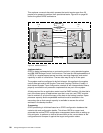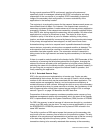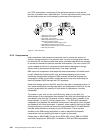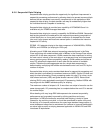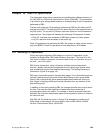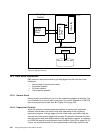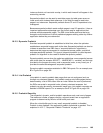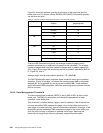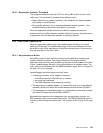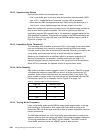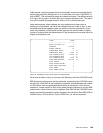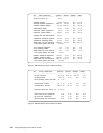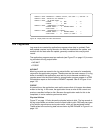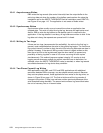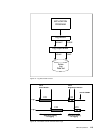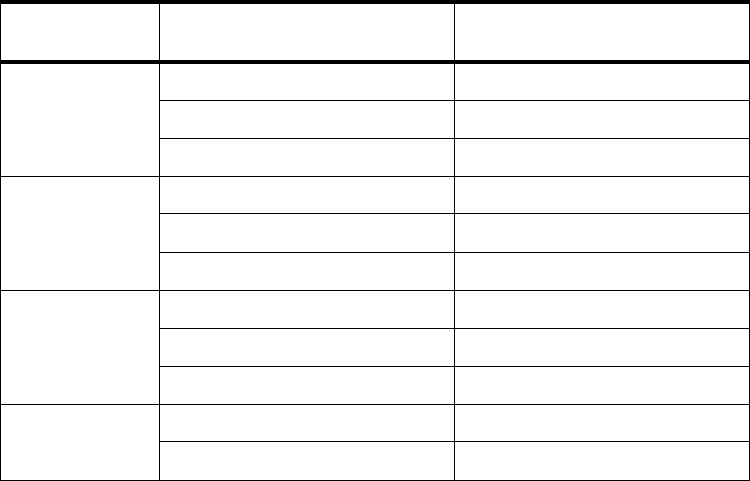
106 Storage Management with DB2 for OS/390
Figure 24 shows the prefetch quantity as a function of the page size and the
buffer pool size. For certain utilities (REORG, RECOVER), the prefetch quantity
can be twice as much.
Table 24. Number of Pages Read Asynchronously in One Prefetch Request
From the DB2 PM accounting trace, the average number of pages read in
prefetch operations by an application program can be calculated. The average
number of pages read is the total number of pages read in prefetch operations
(
E in Figure 33 on page 109) divided by the sum of prefetch operations (B, C, D
in Figure 33), that is:
Average pages read by one prefetch operation =
E /(B+C+D).
The DB2 PM statistics report calculates these values for every type of prefetch
operation. Figure 34 on page 110 shows the average pages read by sequential
prefetch (
K), by list prefetch (L) and by dynamic prefetch (M). These numbers
apply to the whole DB2 subsystem, while the accounting report numbers normally
refer to one plan.
10.2.6 Data Management Threshold
The data management threshold (DMTH) is set by DB2 at 95% of each virtual
buffer pool. The DMTH is maintained and checked independently for each
individual virtual buffer pool.
This threshold is checked before a page is read or updated. If the threshold has
not been exceeded, DB2 accesses the page in the virtual buffer pool once for
each page, no matter how many rows are retrieved or updated in that page. If the
threshold has been exceeded, DB2 accesses the page in the virtual buffer pool
once for each row that is retrieved or updated in that page. Reaching this
threshold has a significant effect on processor usage and performance.
Page Size Bufferpool Size
(buffers)
Prefetch Quantity
(pages/request)
4K <224 8
224-999 16
>=1000 32
8K <113 4
113-499 8
>=500 16
16K <57 2
57-249 4
>=250 8
32K <100 2
>=100 4



